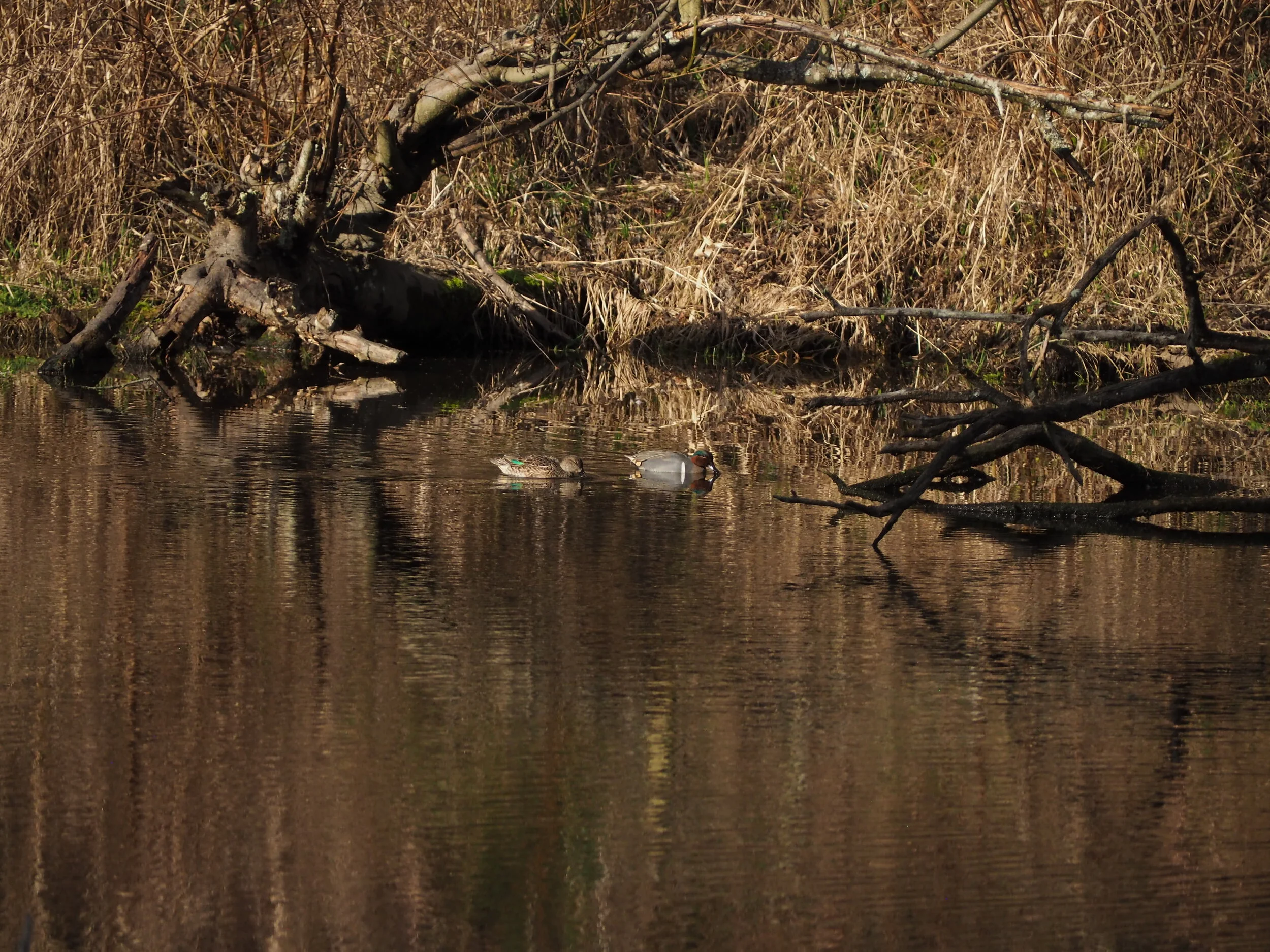Bird of the Week: Green-Winged Teal
Photo by Albert Kerelis
Species: Green-winged Teal, or Anas crecca
Family: Anatidae (waterfowl, i.e. ducks, geese, and swans)
Star sign: Libra
Rating: 12/10
Ideal Date: Footie pajama movie night
As the website for the National Audubon Society so eloquently puts it, the Green-winged Teal is “our smallest dabbling duck.” With only a little more than a foot of length to their name, this lovely little bird packs an impressive amount of good vibes into a pint-sized package! Really, what’s not to love about this bird? They are very small and cute. Their green, brown, and grey coloration is eye-catching without becoming garish. They like to whistle and quack, especially in winter. They are also agile little friends, capable of taking off in flight from the water without any sort of running start! Truly, they are excellent ducks. Although the humble Mallard will always be The Duck™, the Green-winged Teal effortlessly captures the well-rounded cuteness, cheerfulness, and elegance that are inherent to the state of being a duck.
Green-winged Teals are dabbling ducks, which means that they feed by sitting on the surface, tipping over so that their tails are in the air and their heads are underwater, and nibbling at anything their little beaks can reach. Lining the insides of their bills are comb-like membranes called lamella which, like the baleen of whales, filter out mud and keep in any invertebrates they might want to eat. These feathered friends mostly eat plants, especially seeds. Between the tiny bits of baby plants and the microscopic invertebrates, Green-winged teals truly are what they eat: small! Is there nothing about these excellent lads that isn’t at least a little adorable?
These little dudes prefer to inhabit shallow waters, and luckily for us, the Reed Lake is not very deep! Before the snows hit, there were two Green-winged Teals in the canyon, although only time will tell if the cold weather spurred them to leave in search of greener pastures. If you want to see these friends, watch for petite ducks; the males will have grey bodies and cinnamon-brown heads with a streak of green around the eye, and the females will resemble smaller versions of female Mallards. This bird’s key identifying mark is their eponymous Green wing: their secondary feathers are a beautiful, iridescent, iconic lime green color, not found on any other duck in North America. If you can identify that, then you can be sure you are admiring the smallest denizen of the Reed waterfowl community.

